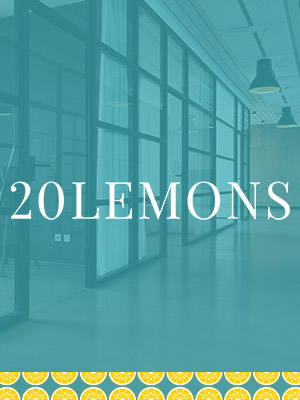Update Your Restaurant Marketing Plan with Changing Industry Trends

Hi, we're 20Lemons
Marketing should never feel chaotic. Our approach brings clarity and purpose to your strategy, turning what once felt overwhelming into something as refreshing and satisfying as a glass of cool, crisp lemonade.

It is fair to say that the hospitality industry has changed more in the past year than in the last five years prior. Restaurants were forced to adopt automation technology and find ways to facilitate off-premise dining during a time where quick-serve restaurants proved most profitable. While such developments were prevalent in years prior, the pandemic sped up the adoption rate and ultimately the necessity of these trends. Now in order to keep up, restaurants must set a strategic marketing plan in order to roll out new initiatives and build their digital presence.
It is estimated that more than 110,000 restaurants nationwide went out of business over the past year, according to the National Restaurant Association. At the same time, each American family spent $1200 on food prepared in quick-serve restaurants—a sector of the restaurant industry worth $300 billion, according to Bloom Intelligence. The quick-serve style restaurants were able to stay relevant by updating business operations and rolling out marketing plans to support their initiatives.
A basic marketing plan in 2021 involves exposure on a few different fronts:
- Social Media Marketing Plan
- Customer Communication Plan (Both Current and Prospective Customers)
- Internal Communication Plan
Organized marketing plans can yield 20-30% return on investment. Noelle Stary of 20 Lemons, LLC has been creating restaurant marketing plans for over a decade.
“When creating a plan for social media, we know there is more noise in the channel than ever before,” said Stary. “We have to get specific. Restaurants have to narrow their social media use based on their audience. Also, there’s more need for platform-specific and audience-specific content. The social media ‘gods’ want attention exclusivity.”
When planning and posting social media for her clients, Stary advises to pick just a couple social media platforms. She advocates that each post be original rather than simply copying one message across a variety of platforms.
This year, 77% of Americans are active on social media and 86% of those people try a new restaurant after seeing food-related content online. However, Stary asserts that social media cannot makeup an entire plan.
“For current and future customers, a communication plan should be part-paid advertising and messaging,” said Stary. “Since people are home nowadays, we’re seeing better success with methods like direct mail to a hyper-specific area code.”
Internal communication with restaurant staff has also become more important over the past year. Between state regulations and restaurant policy changes, the message that goes out to a staff must be succinct in order to deliver up-to-date information to customers when there is face-to-face communication.
“Overall, these marketing initiatives should create a sense of community within internal staff as well as with the customer base,” said Stary. “We’re getting more specific with messaging because at the same time, we’re trying to define our client’s audiences more and more.”
Restaurant marketing should work toward the goal of capturing customer information, learning about the audience, and adjusting messaging to better communicate. The entire process should inspire the community aspect while also creating a better, more comfortable experience for customers. Whether planning internally or with a restaurant marketing team like 20 Lemons, businesses must take new trends into consideration while developing a marketing plan. If digital exposure, customer communication, and internal objectives are coordinated together, there will be little waste and better ROI. Quick-serve trends have shown how increased use of technology should always be backed up by a coordinated marketing plan. When it’s time for businesses to pivot, restaurants without marketing plans to roll out these changes are often left behind.
